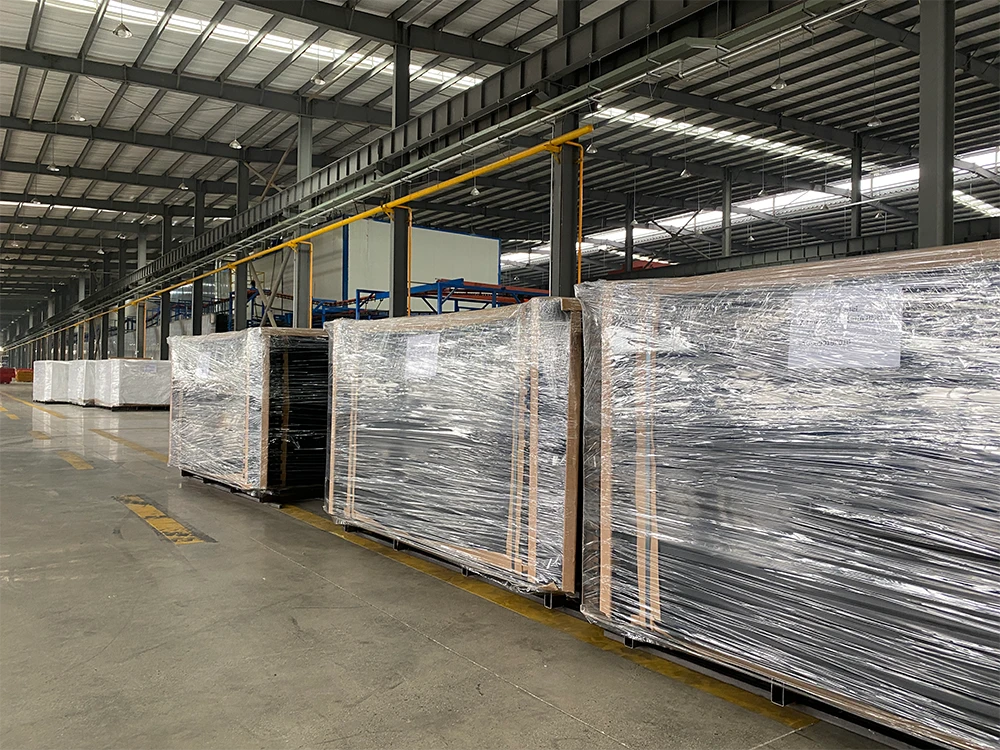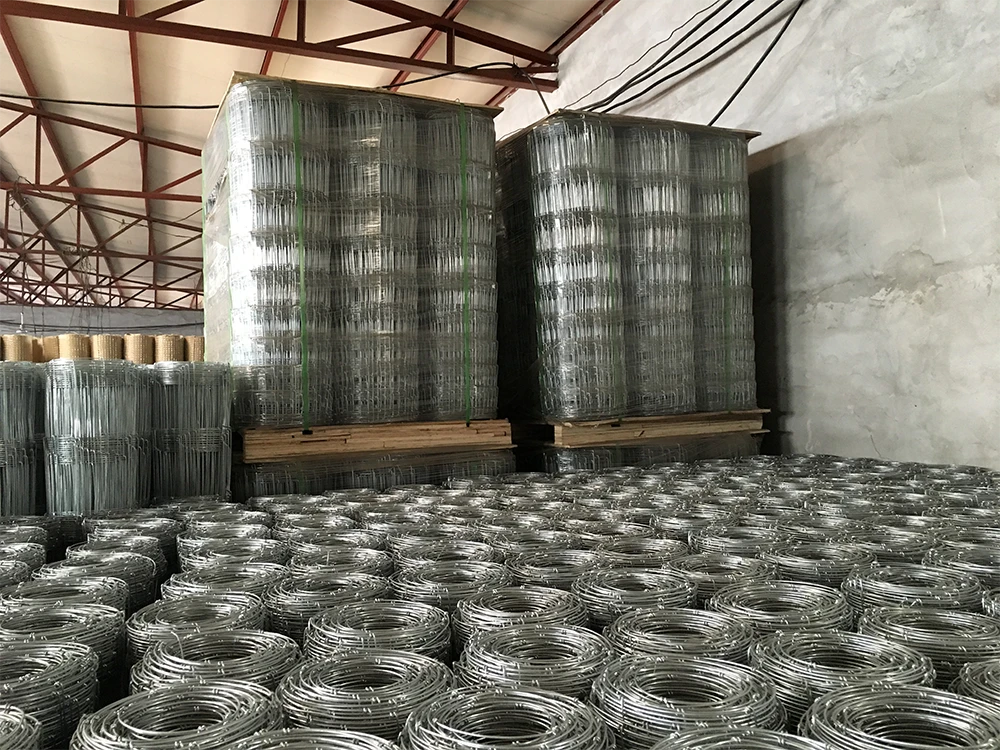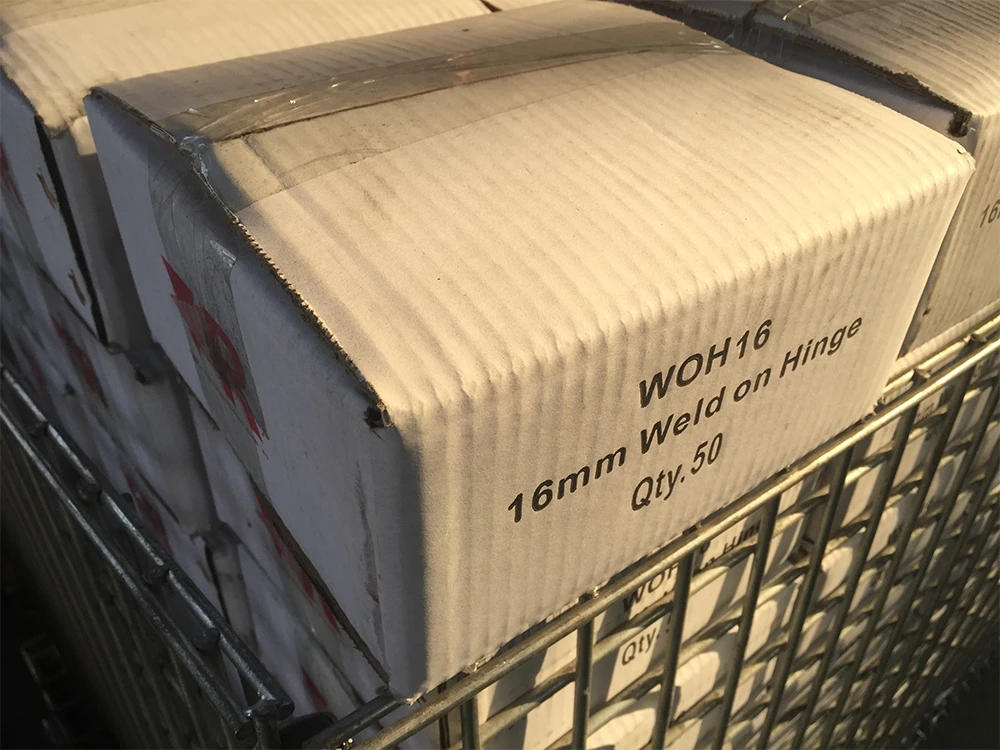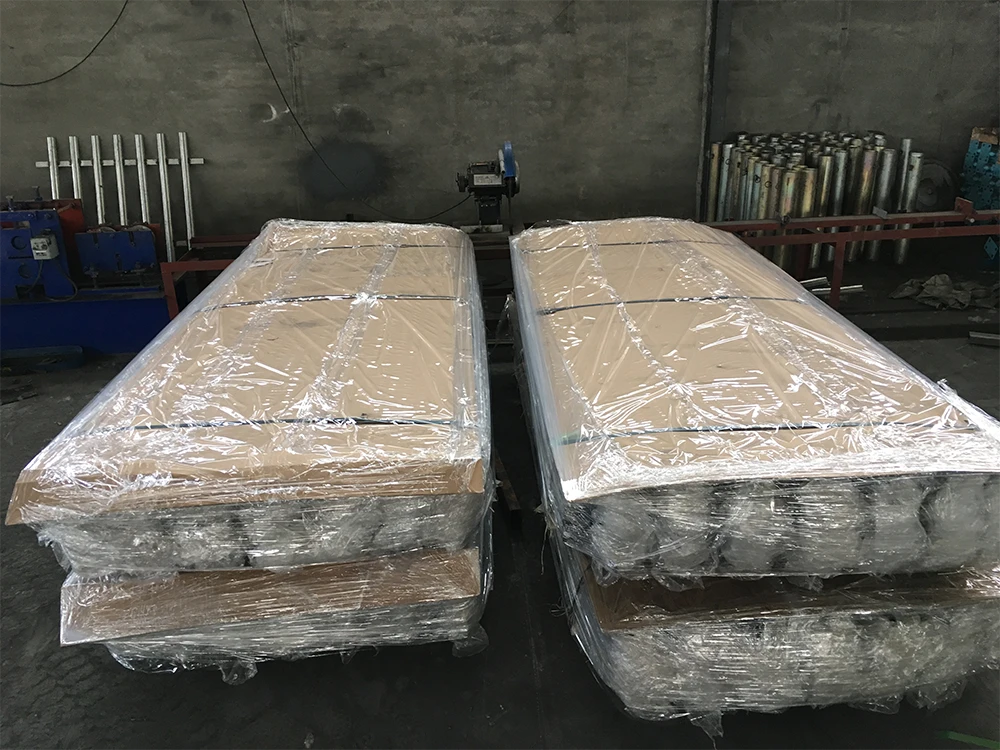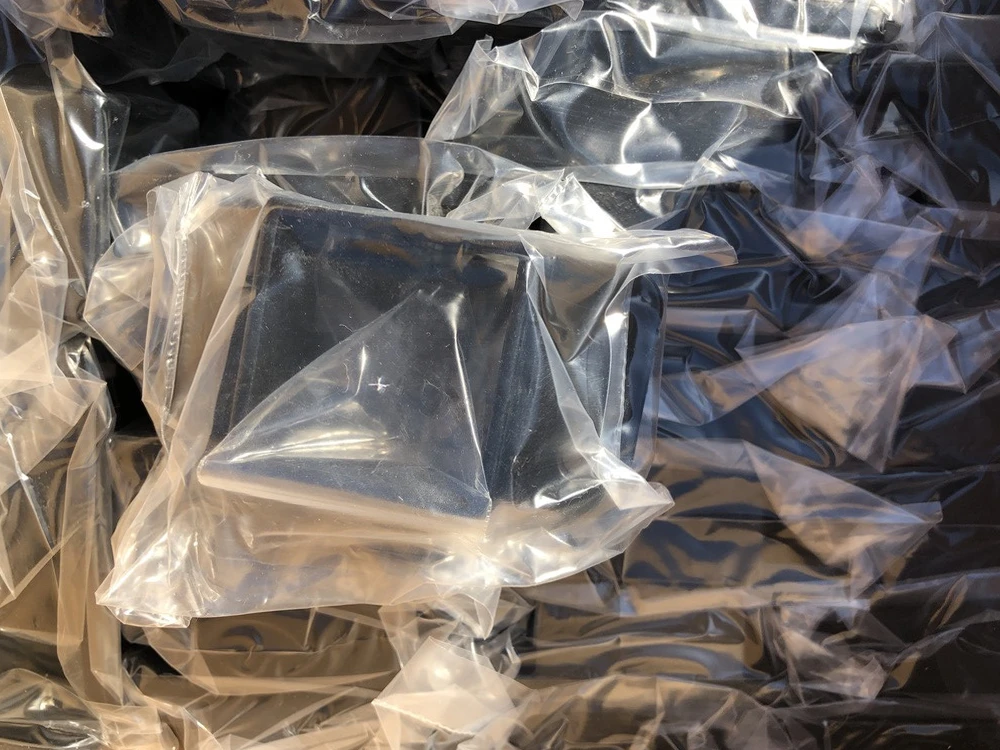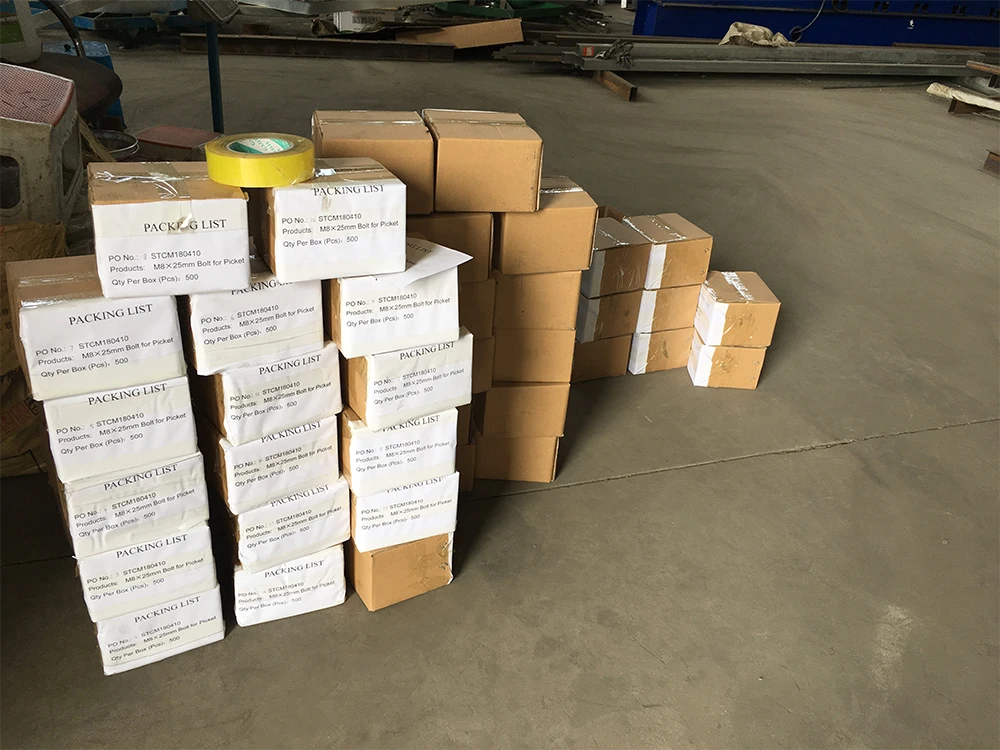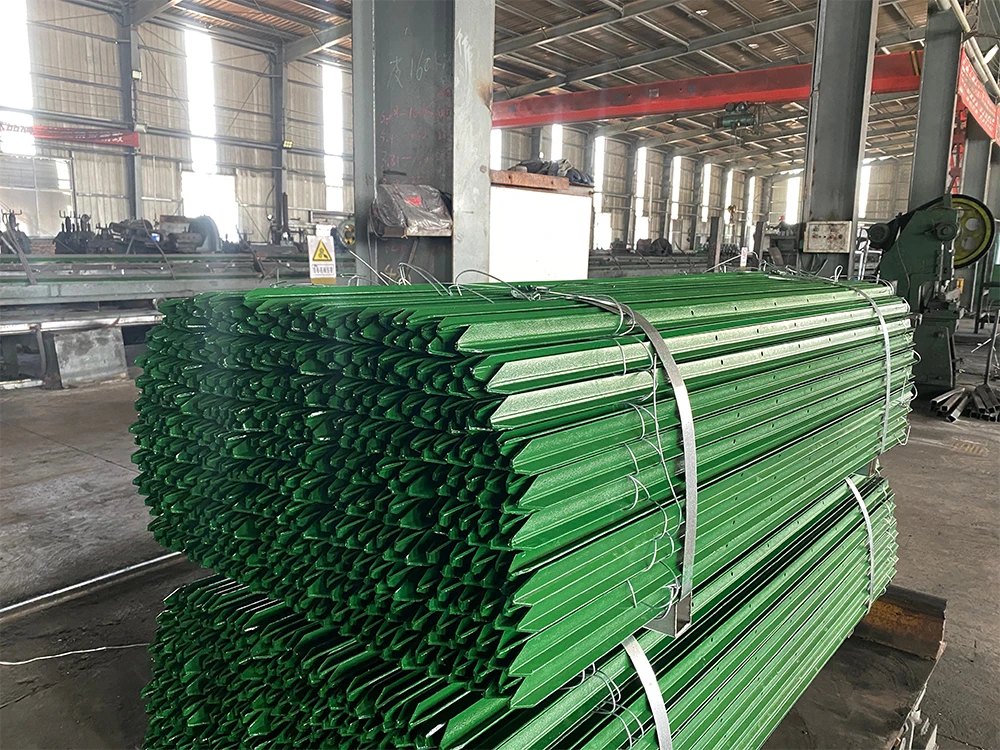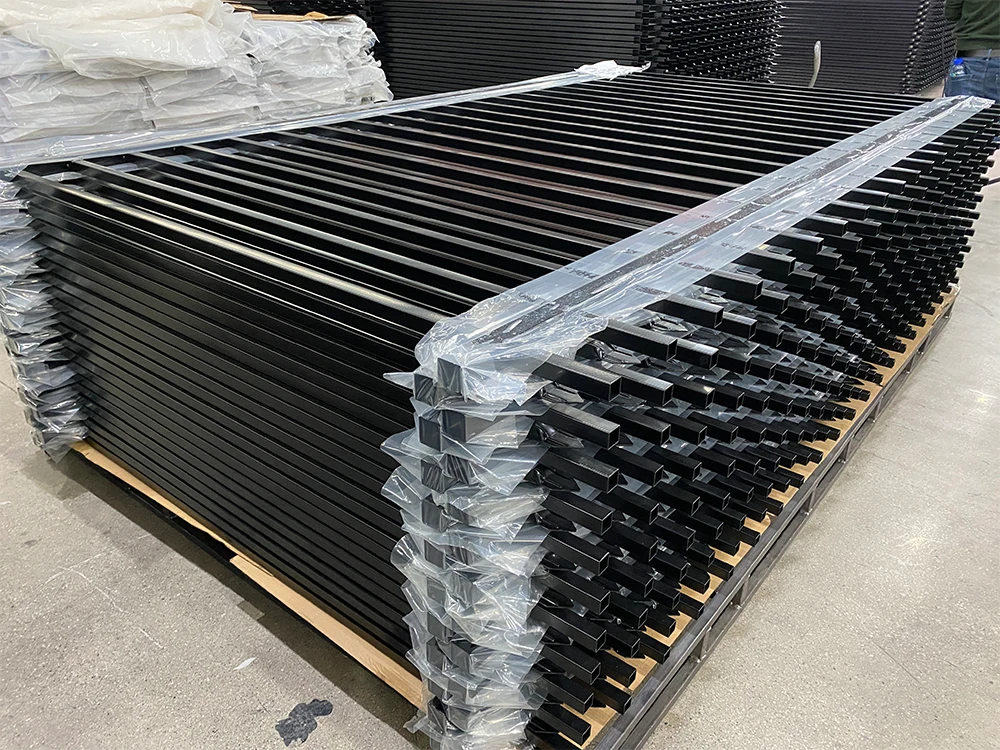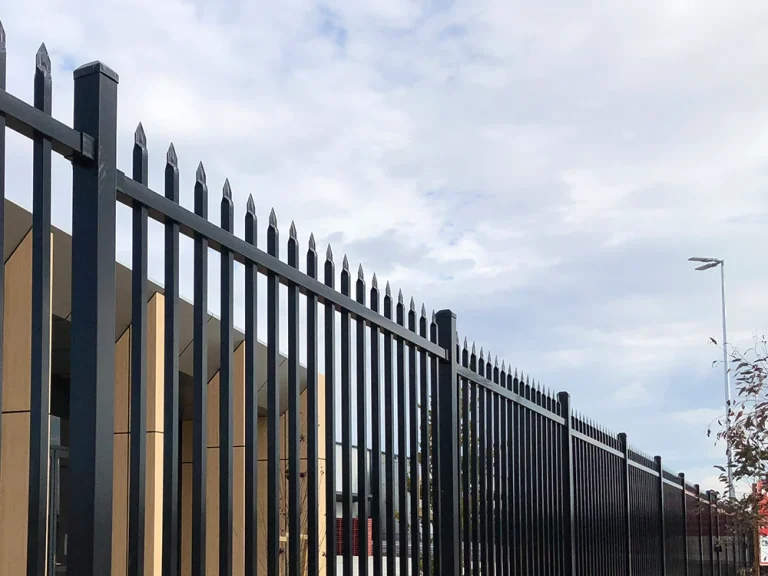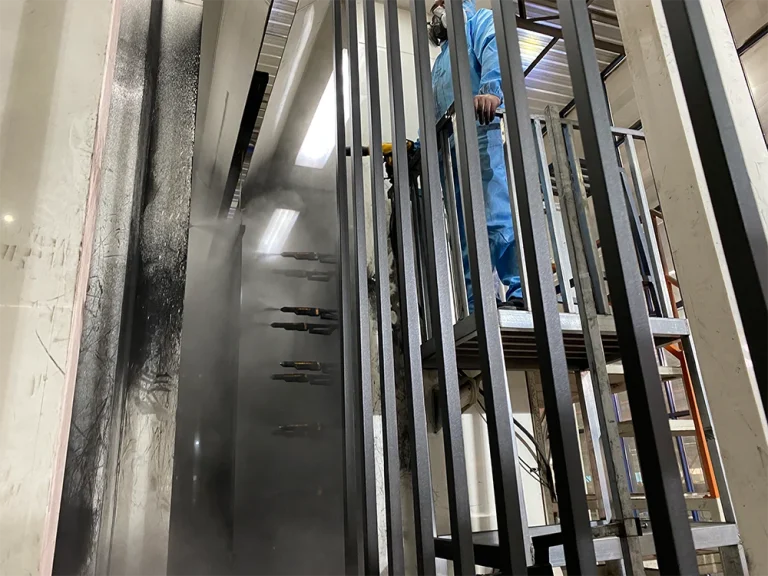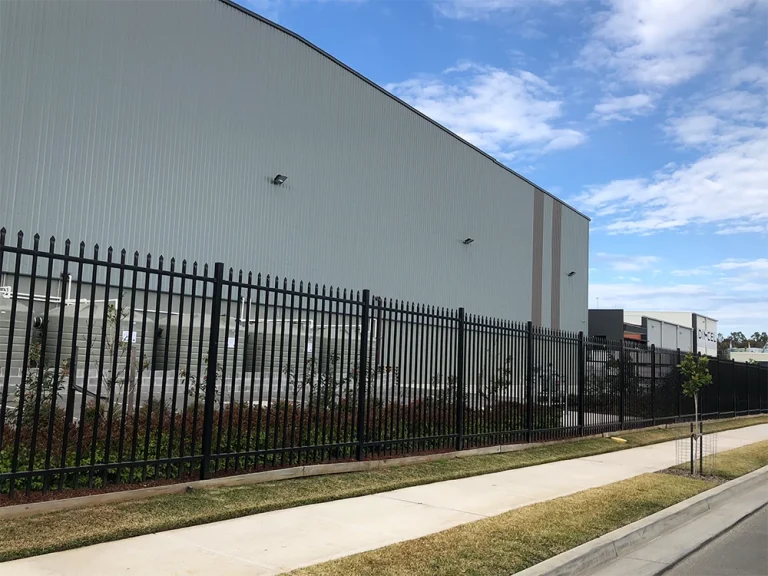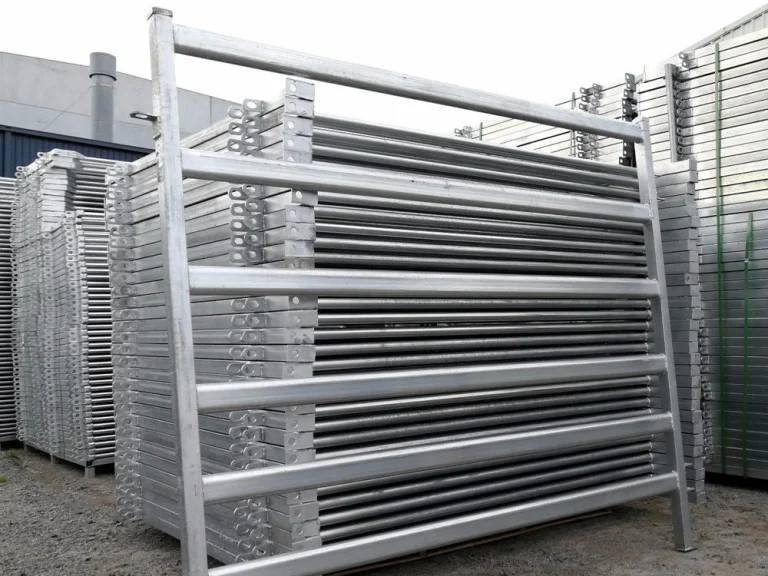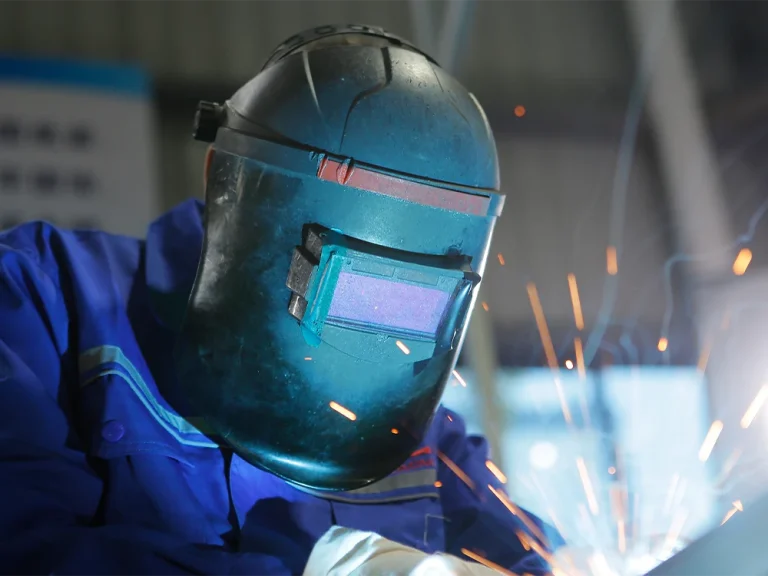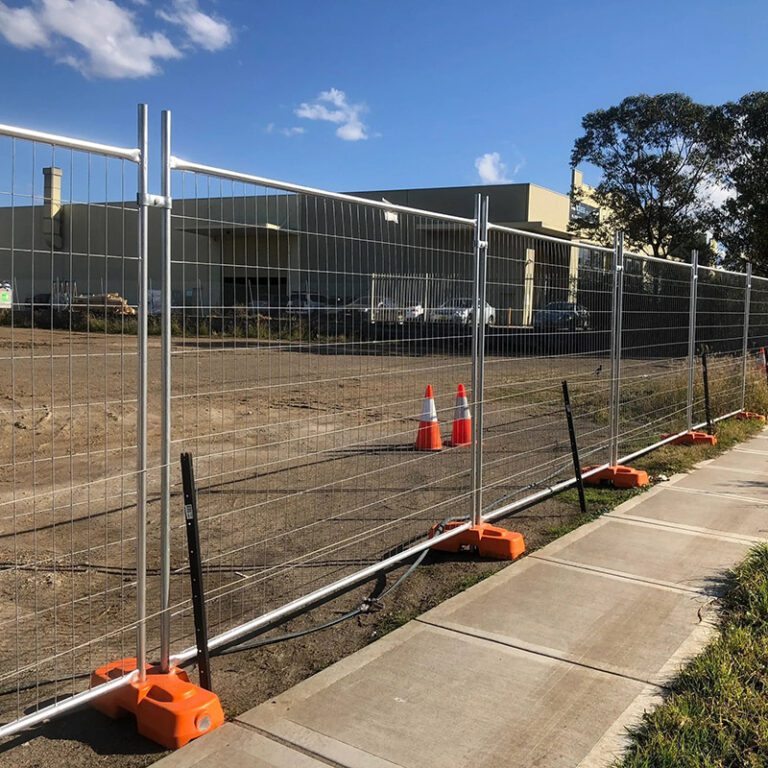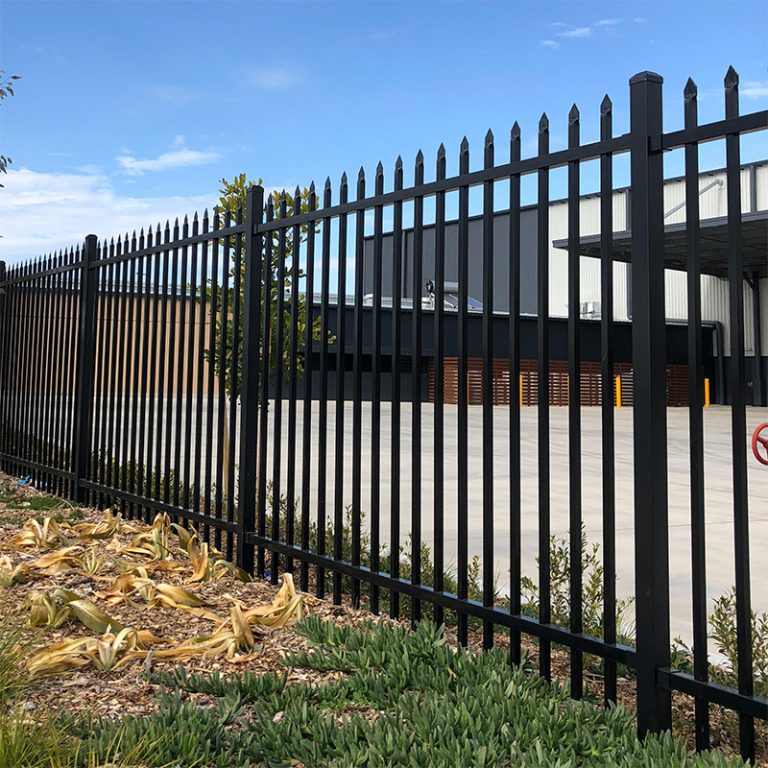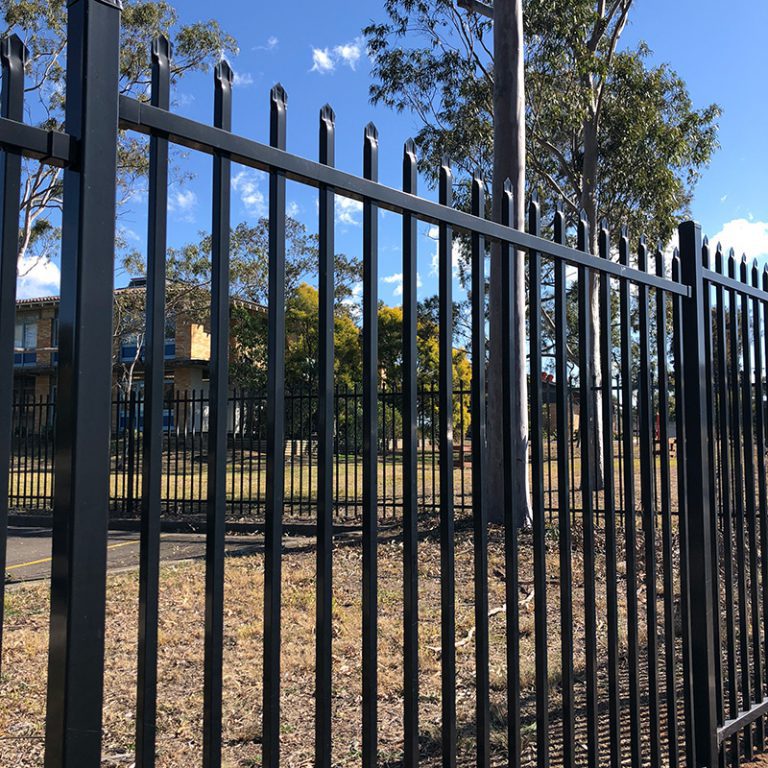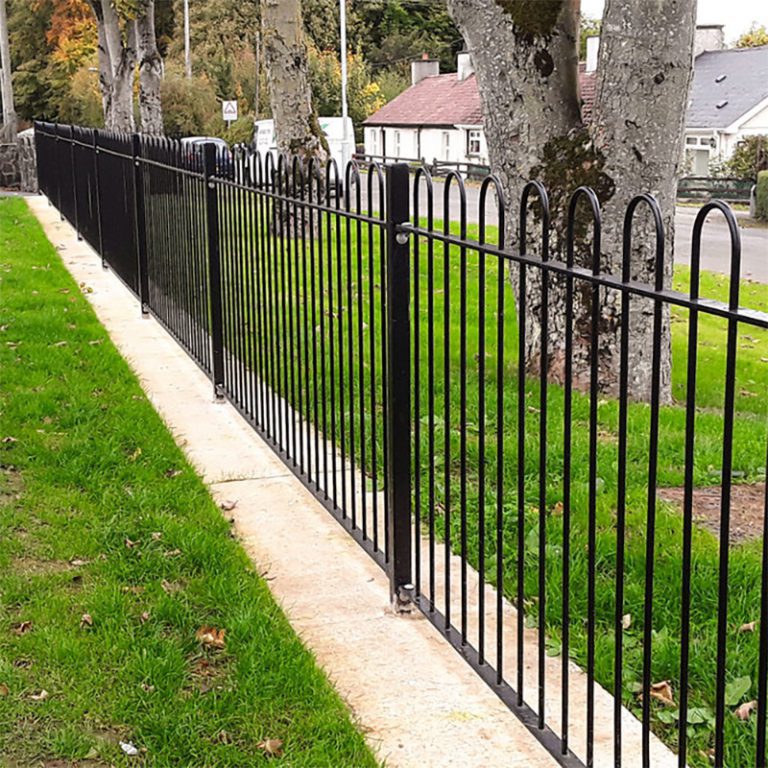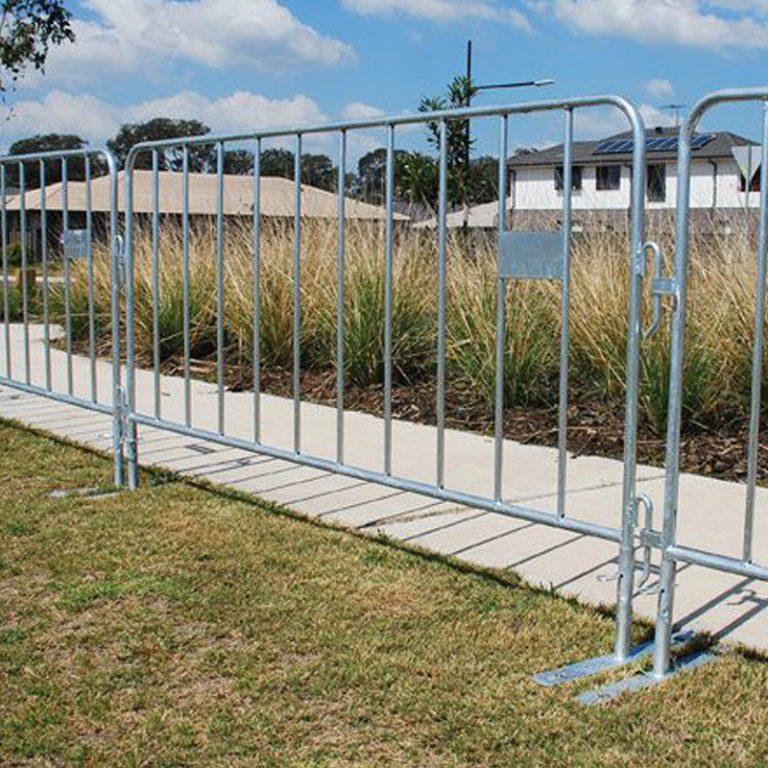Packaging plays a crucial role in ensuring that fence products arrive safely and in perfect condition, whether they are shipped across the city or internationally. As a professional fence manufacturer, we understand that proper packaging is not only about protecting the products during transport but also about optimizing space, reducing costs, and meeting environmental standards. In this blog, we will explore the different packaging methods we use for various types of fence products, from commercial fence panels to specialized items like barbed wire and Y-post fences.
1. Packaging Methods for Different Fence Products
1.1 Commercial and Industrial Fence Panels
Commercial and industrial fence panels, often made of steel or aluminum, are typically large and heavy. Their packaging needs to ensure they don’t bend, scratch, or warp during transportation. Common methods include:
– Steel Pallets: Fence panels are stacked vertically or horizontally on reinforced steel pallets, providing stability during shipping.
– Shrink-wrapping: Panels are often shrink-wrapped to protect them from moisture, dust, and other environmental factors.
– Corner Protection: Special corner protectors are used to prevent damage to panel edges.
– Banding Straps: Strong plastic or metal straps are used to keep the panels tightly secured to the pallet.
1.2 Wire Mesh Products
Wire mesh fences, such as welded or chain links, require more flexible packaging due to their rollable nature. Packaging for wire mesh products includes:
– Bundling and Strapping: Rolls are tightly bundled together and secured with plastic or steel straps to prevent movement during shipping.
– Plastic Wrapping: The bundles are often wrapped in plastic to prevent moisture damage and to keep the rolls clean.
– Cardboard Inserts: Sometimes cardboard inserts are used between rolls to prevent them from collapsing or warping.
1.3 Farm Fence Products
Farm fences, such as hinge joints or field fences, are often shipped in large quantities. Key packaging methods include:
– Roll Packaging: Similar to wire mesh, farm fences are rolled up and tied with durable straps to secure them.
– Palletizing: Multiple rolls are placed on pallets for easier handling and loading.
– Protective Film Wrapping: A film wrap is added around the rolls to keep dirt and moisture out during long-distance transportation.
2. Packaging Methods for Different Parts of Fence Products
2.1 Fence Panels
Fence panels, whether for residential or industrial use, require heavy-duty packaging to ensure they arrive in pristine condition. Packaging solutions include:
– Foam or Bubble Wrap: To prevent scratches, each panel may be wrapped individually in foam or bubble wrap before being placed on pallets.
– Reinforced Pallets: Heavier panels require stronger pallets to prevent bending or shifting during transport.
2.2 Fence Posts
Fence posts come in various sizes and require appropriate protection to avoid damage:
– Post Sleeves or End Caps: Protective sleeves or plastic end caps are applied to the ends of the posts to prevent denting and scratching.
– Bundle Strapping: Posts are grouped together in bundles and strapped tightly with steel or plastic bands.
2.3 Other Fence Accessories
Smaller fence components, such as brackets, clamps, screws, and post caps, require secure packaging to avoid loss or damage:
– Plastic Bags or Pouches: These accessories are often packed in small, durable plastic bags or pouches, then placed in boxes for easy handling.
– Labeling and Sorting: Clear labels and sorted packaging ensure quick identification during installation.
3. Packaging Methods for Special Fence Products
3.1 Barbed Wire Fences
Barbed wire fences pose specific packaging challenges due to their sharp edges:
– Spool Packaging: Barbed wire is often wound onto spools or reels to make it easier to handle. The spools are then placed in sturdy wooden crates or boxes.
– Protective Covers: A protective cover, such as plastic or fabric, is sometimes used over the spools to prevent injury during handling.
3.2 Y Post Fences
Y posts, commonly used for agricultural and rural fencing, require heavy-duty packaging to avoid damage to their points or edges:
– Plastic or Foam Padding: Y posts are stacked in bundles with protective padding at the ends to prevent bending.
– Heavy-Duty Strapping: Thick strapping secures the bundles and prevents shifting during transit.
3.3 Palisade Fences
Palisade fences, known for their pointed tops and heavy-duty steel design, require specific packaging to avoid sharp points causing damage:
– Custom-Made Pallets: Palisade fence components are stacked on custom pallets with additional padding at the top and bottom.
– Edge Protection: Special guards or foam inserts are used to protect the sharp edges during handling and transport.
4. Additional Considerations for Fence Packing
When packaging fence products, it’s important to consider several factors:
– Weather Protection: Using weather-resistant wrapping can protect fences from moisture, rust, and other environmental factors during transit.
– Efficient Loading: Palletized loads are easier to transport via forklifts and reduce the risk of accidents or damage.
– Custom Packaging: For large or irregularly shaped fences, custom packaging solutions ensure maximum protection and efficiency during shipping.
5. Custom Packaging for International Shipments
Shipping fence products internationally presents unique challenges due to varying regulations and transport conditions. As a global manufacturer, we’ve developed packaging methods that ensure safe, compliant, and efficient international deliveries:
5.1 Compliance with International Shipping Standards
– ISPM 15 Certified Pallets: For countries that require it, we use ISPM 15-certified wooden pallets or iron pallets, which have been treated to prevent the spread of pests. This is essential for international shipping, ensuring our products pass customs inspections smoothly.
– Labeling Requirements: We ensure that all packaging is correctly labeled with international symbols, indicating product fragility, moisture sensitivity, and handling instructions. This ensures that our fence products are handled properly across all borders.
5.2 Protection Against Varying Environmental Conditions
– Moisture Barriers for Ocean Freight: Products shipped via sea often face high humidity levels. We use moisture-resistant barriers and vacuum-sealed packaging for products like wire mesh or metal fences to prevent corrosion.
– Temperature-Controlled Solutions: For extreme climates, we provide additional protection like insulated covers or heat-resistant materials to prevent warping or damage to sensitive components.
5.3 Tailored Packaging for Different Markets
– Localized Packaging Solutions: Depending on the destination country, we tailor our packaging to meet the specific needs of local distributors and installation teams, ensuring products are easy to handle and distribute on-site.
– Language-Specific Instructions: For international customers, we include packaging instructions in multiple languages, ensuring clarity and proper handling across global markets.
6. Impact of Packaging on Supply Chain Efficiency
The packaging process plays a crucial role in overall supply chain efficiency. By optimizing our packaging, we not only protect the product but also ensure faster delivery and lower costs for our clients. Here’s how our packaging methods improve supply chain performance:
6.1 Reducing Shipping Costs Through Efficient Packaging
– Space Optimization: By packing products in a compact manner, we reduce the overall shipping volume, allowing for more efficient use of transportation containers. This not only lowers shipping costs but also improves logistics efficiency.
– Lightweight Packaging Materials: For products that can afford it, we use lightweight packaging materials that do not compromise protection but reduce the total weight, minimizing shipping fees.
6.2 Speeding Up Handling and Distribution
– Pre-Assembled Kits: For smaller fence components or accessories, we package them into pre-assembled kits, simplifying inventory management for our clients. This reduces the time needed for sorting and handling at their end.
– Barcode Labeling for Fast Identification: We include barcode labeling on our packaging to streamline product identification during transportation, making inventory management faster and more accurate for our customers.
6.3 Improving Storage Capabilities
– Stackable Packaging: Our packaging is designed to be stackable in warehouses, optimizing the use of storage space and ensuring that products remain accessible without compromising safety.
– Protective Storage Features: We incorporate packaging features such as moisture-resistant wraps and UV-protective films, allowing products to be stored safely for extended periods before use.
7. Packaging Quality Control and Testing
Quality control in packaging is just as important as the production of the fence products themselves. We employ rigorous testing procedures to ensure our packaging is robust and reliable:
7.1 Durability Testing
– Drop Tests: We perform drop tests on packaged products to ensure that they can withstand rough handling during transportation. These tests simulate real-world shipping conditions to prevent damage during transit.
– Compression Tests: Packaging for heavier products like metal fence panels undergoes compression testing to ensure the materials used can handle the weight and pressure during stacking.
7.2 Weather Resistance Testing
– Moisture Resistance Tests: We test packaging materials for resistance to moisture and water exposure to prevent rusting or degradation of fence components during transit.
– Temperature and UV Resistance: For products that may be exposed to extreme weather conditions, we test the packaging for resistance to high temperatures and UV rays, ensuring long-term durability during outdoor storage.
Our Advantage as a Professional Fence Manufacturer
As a professional fence manufacturer, our strength lies not only in producing high-quality fences but also in delivering them to our clients safely and efficiently. We go beyond traditional packaging methods by offering custom solutions tailored to each product’s unique requirements. Our team continually innovates and tests new packaging techniques to meet international shipping standards, reduce environmental impact, and optimize supply chain efficiency.
Our advantages include:
– Custom Packaging Solutions: We provide tailored packaging based on the specific requirements of each fence type, ensuring optimal protection.
– Sustainability Focus: We integrate eco-friendly materials and methods into our packaging to align with global sustainability goals.
– Global Logistics Expertise: Our packaging is designed for efficient international shipping, minimizing delays and ensuring products arrive in perfect condition.
– Quality Assurance: Each package undergoes rigorous testing to meet high standards of durability, weather resistance, and safety.
Conclusion:
In conclusion, packaging is a critical aspect of our fence manufacturing process that ensures product safety, supply chain efficiency, and customer satisfaction. From sustainable packaging solutions and custom international packaging to rigorous quality control tests, we cover every angle to guarantee that our products arrive in the best possible condition. As a professional fence manufacturer, our expertise in optimizing packaging not only helps protect our products but also reduces shipping costs, supports eco-friendly practices, and streamlines logistics for global clients. By choosing our fence products, customers benefit from tailored packaging solutions that cater to their specific needs, making us a trusted partner for both small and large-scale fencing projects.

